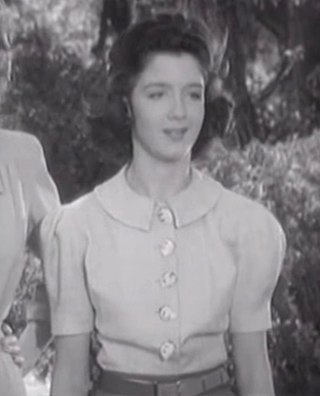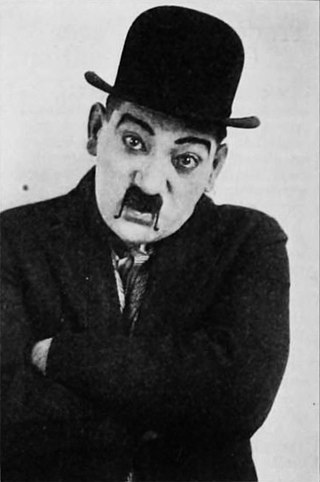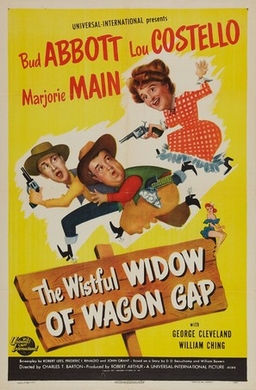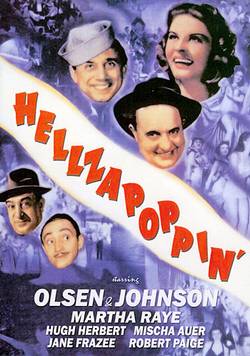
William Alexander "Bud" Abbott was an American comedian, actor and producer. He was best known as the straight man half of the comedy duo Abbott and Costello.

Louis Francis Cristillo, better known as Lou Costello, was an American comedian, actor and producer. He was best known for his double act with Bud Abbott and their routine "Who's on First?".

Abbott and Costello were an American comedy duo composed of comedians Bud Abbott and Lou Costello, whose work in radio, film, and television made them the most popular comedy team of the 1940s and 1950s, and the highest-paid entertainers in the world during the Second World War. Their patter routine "Who's on First?" is considered one of the greatest comedy routines of all time, a version of which appears in their 1945 film The Naughty Nineties.

"Who's on First?" is a comedy routine made famous by American comedy duo Abbott and Costello. The premise of the sketch is that Abbott is identifying the players on a baseball team for Costello. However, the players' names can simultaneously serve as the basis for questions and responses, leading to reciprocal misunderstanding and growing frustration between the performers. Although it is commonly known as "Who's on First?", Abbott and Costello frequently referred to it simply as "Baseball".

Buddy Hackett was an American actor and comedian. His best remembered roles include Marcellus Washburn in The Music Man (1962), Benjy Benjamin in It's a Mad, Mad, Mad, Mad World (1963), Tennessee Steinmetz in The Love Bug (1968), and the voice of Scuttle in The Little Mermaid (1989).

Margaret O'Rene Ryan was an American dancer and actress, best known for starring in a series of movie musicals at Universal Pictures with Donald O'Connor and Gloria Jean.

On Your Toes (1936) is a musical with a book by Richard Rodgers, George Abbott, and Lorenz Hart, music by Rodgers, and lyrics by Hart. It was adapted into a film in 1939.

Clyde Adolf Bruckman was an American writer and director of comedy films during the late silent era as well as the early sound era of cinema. Bruckman collaborated with such comedians as Buster Keaton, Monty Banks, W. C. Fields, Laurel and Hardy, The Three Stooges, Abbott and Costello, and Harold Lloyd.

Buck Privates is a 1941 musical military comedy film that turned Bud Abbott and Lou Costello into bona fide movie stars. It was the first service comedy based on the peacetime draft of 1940. The comedy team made two more service comedies before the United States entered the war. A sequel to this movie, Buck Privates Come Home, was released in 1947. Buck Privates is one of three Abbott and Costello films featuring The Andrews Sisters, who were also under contract to Universal Pictures at the time.

The Abbott and Costello Show is an American television sitcom starring the comedy team of Bud Abbott and Lou Costello. The program premiered in syndication in the fall of 1952 and ran two seasons to the spring of 1954. Each season ran 26 episodes.

Heinie Conklin was an American actor and comedian whose career began in the silent film era.

Lost in a Harem is a 1944 American comedy film directed by Charles Reisner and starring the team of Abbott and Costello alongside Marilyn Maxwell.

Little Giant is a 1946 American comedy drama film directed by William A. Seiter and starring the comedy team of Abbott and Costello alongside Brenda Joyce and Jacqueline deWit. It was produced and distributed by Universal Pictures. The film was released in the United Kingdom with the alternative title On the Carpet.

The Wistful Widow of Wagon Gap is a 1947 American comedy western film directed by Charles Barton and starring the comedy team of Abbott and Costello alongside Marjorie Main and Audrey Young. It was released on October 8 and distributed by Universal-International.

Mexican Hayride is a 1948 film starring the comedy team of Abbott and Costello. The film is based on Cole Porter's Broadway musical Mexican Hayride starring Bobby Clark. No songs from the stage musical were used in the film.

Dance with Me, Henry is a 1956 American comedy film directed by Charles Barton and starring Abbott and Costello and Gigi Perreau. It is the final film that they starred in together, although Costello starred in one more film before his death, The 30 Foot Bride of Candy Rock.
Sidney Fields, born Sidney Hirsch Feldman, was an American comedic actor and writer best known for his featured role on The Abbott and Costello Show in the 1940s (radio) and early 1950s (television). He was sometimes credited as "Sid Fields" or "Sidney Field".

Hellzapoppin' is a 1941 American musical comedy film, and an adaptation of the stage musical of the same name that ran on Broadway from 1938 to 1941. The film was directed by H. C. Potter and distributed by Universal Pictures. Although the entire Broadway cast was initially slated to feature in the film, the only performers from the stage production to appear in the film were lead actors Ole Olsen and Chic Johnson, Katherine Johnson, and the specialty act Whitey's Lindy Hoppers.

Jacqueline deWit was an American film and TV character actress from Los Angeles who appeared in over two dozen films, including Spellbound (1945), The Snake Pit, The Damned Don't Cry!, Tea and Sympathy, All That Heaven Allows and Harper. She also appeared in the 1946 Abbott and Costello comedy Little Giant, as Bud Abbott's wife.

Easy to Look At is a 1945 American comedy film directed by Ford Beebe and written by Henry Blankfort. The film stars Gloria Jean, Kirby Grant, J. Edward Bromberg, Eric Blore, George Dolenz, and Mildred Law. The film was released on August 10, 1945, by Universal Pictures.



















